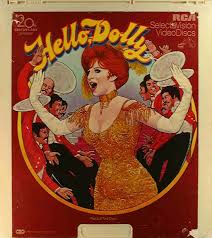 I'm happy to point out a new resource for those considering a giving circle — where people with a cause or set of values in common decide to work together to make donations. Amplifier is a network of giving circles motivated by Jewish values, but useful to everyone. Take a look at their resources for information, including a quiz that helps you identify what type of giving circle might be the right choice for you and your fellow donors. They also quote Dolly Levi from the musical Hello Dolly!, for which I've had an odd affinity since I was 6-years old (I played an extra at that age in a community theater): "Money, pardon the expression, is like manure. It’s not worth a thing unless it’s spread around, encouraging young things to grow.” —Julia
1 Comment
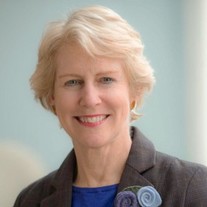 "I’ve always said that when it comes to influencing your children to be charitable, it’s not what you say, it’s what you do. Guess what? I was wrong." Ellen Remmer of The Philanthropic Initiative just posted this statement above on TPI's blog, Deep Impact. Like Ellen, I've spent years suggesting to clients concerned about their children's philanthropic urges that they should teach by doing. I still think that's a good idea -- I know how my mother's philanthropic activities affected me, even as I sat at the back of the room coloring while she participated in meetings -- but the Women Give 2013 study Ellen sites is fascinating. Ellen wrote: "it found that children whose parents to talk to them about giving are 20% more likely to give than those whose parents don't. And it found that talking actually matters more than role-modeling when it comes to parents influencing their children’s philanthropic behavior." Well, show and tell, I guess! —Julia 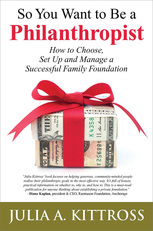 By mid-September 2013, So You Want to Be a Philanthropist will be available on Amazon. This lively, jam-packed book will allow those thinking about setting up a family foundation to ask the questions they should — before they do. And for those with a foundation that isn't functioning as they'd hoped, this book can help get you back on the right track. I'm excited about your reactions and look forward to hearing what you think! — Julia  On the evening of May 21st, a limited number of philanthropists will meet at the Threshold Group's invitation to hear Maggie Walker, Laurel Nesholm and Molly Hanlon (Walker Family Foundation, Nesholm Foundation and Hanlon Family Foundation respectively) have a conversation about the various ways they have engaged the next generation in their family's philanthropy. I'm delighted to facilitate this discussion about "Igniting the Full Potential of Your Family in Philanthropy" and if you'd like to attend, please contact Katrin Dietz at the Threshold Group at (206) 748-3695 or at [email protected]. —Julia  I was recently perusing Admitting Failure, an interesting website dedicated to sharing stores of learning from failure in the non-profit sector, which led me to following a link to the Canadian Engineers Without Borders' website where I could delight in the stories of failure that this organization has, for five years, shared with any all through their annual Failure Reports. I so wish everyone would have at least a failure column in their annual report or on their website! And this includes foundations.... Anyone who funds internationally should read the EwB's past failure reports, since most of the stories have to do with programming in developing countries -- although a lot of the 2012 report talks about EwB's internal operational failures as well. As it says on the Admitting Failure website: "Fear, embarrassment, and intolerance of failure drives our learning underground. No more. Failure is strength. The most effective and innovative organizations are those that are willing to speak openly about their failures. Because the only truly "bad" failure is one that's repeated." —Julia  Don’t you find that all the new philanthropic terms are confusing? I sure do. Philanthrocapitalism, tactical philanthropy, strategic philanthropy, etc, etc. There are Blogs and magazines named with these terms, and their authors are always attempting to define their preferred phrase and why both its concept and the phrase they’ve chosen to describe it is better than another’s. An easier way to think about approaches to philanthropy was posted by Sean Stannard-Stockton on his Tactical Philanthropy Blog. [One philanthropic approach is] focused on creating and sustaining an environment within which great nonprofit organizations can thrive, while …[another] philanthropy funder focuses on developing the initiatives, goals and approaches that they believe are most likely to succeed. This difference was illustrated extremely well in a Stanford Social Innovation Review post by Amy Sample Ward where she used the difference between gardening and landscaping as an example: The Gardener creates an ecosystem open to change, available to new groups, and full of fresh opportunities to emerge naturally. The approach is focused on organic collaboration and growth for the entire community. The gardener is simply there to help, cultivate, and clear the weeds if/when they poke up. The Landscaper creates an ecosystem that matches a preconceived design or pattern. The approach is focused on executing a preconceived environment, regardless of how natural or organic it may be for the larger area. The landscaper is there to ensure that everything stays just as planned. Do you fund organizations managed by innovative and creative leaders? Are you willing to risk your grant dollars on interesting or unusual efforts? Do you let any and all nonprofits (within your focus area) apply? Do you encourage collaboration among your grantees and others in the field(s) that interest you? Then you’re a “gardener.” (Stannard-Stockton would call you a “tactical philanthropist”.) Have you thought deeply about “what works” in your field? Do you have your goals identified, your approaches chosen, an initiative developed around these goals and approaches, and a portfolio of grantees that fit into those molds? Then you’re a “landscaper.” Neither of these descriptors matter much -- what does matter, though, is that you understand your approach to grantmaking and giving, whether you’re excited to see what self-seeds or prefer to place your flowerpots just so. —Julia  "We've been 'friends' for a long time. We call. You return our call a few weeks later." So starts a short, sharp letter entitled "Dear Foundation People" from Nancy Lublin, CEO of Do Something Inc. and founder of Dress for Success. It makes you laugh, it makes you cry. OK, maybe it won't do either of those things, but it sure cracked a wry smile from me. —Julia  There has been a lot of controversy about the recent Barron’s list of the “25 Most Effective Givers”, and a column by Cindy Gibson in The Nonprofit Quarterly gave me something to ponder. I’ve used the terms ‘philanthropy’ and ‘charity’ to indicate different strategies of giving – not to disparage one over the other, since both are needed – but to clarify what I was talking about. Gibson made a simple but convincing argument that charity IS philanthropy. One of the online comments (by Rachel F.) also made a particularly useful point about logic models and their place in helping charity become more effective: "Logic models meet real needs in real communities every day. Consider this simple model used by soup kitchens everywhere: We feed folks in our community who are hungry [action], when & where they are hungry [strategy], so that we meet even a part of this community's day-to-day hunger needs [goal], thus improving the lives of folks in our community as a whole [meta-goal]. Add in relevant performance indicators (Are there more people who are less hungry in our community? Are there people still going hungry day-to-day that we can reach?) and you're working toward real effectiveness." Charity is not only of value but can be effective. I’ll attempt not to use the word in a way that infers that ‘charity’ is something less-than philanthropy in the future. —Julia 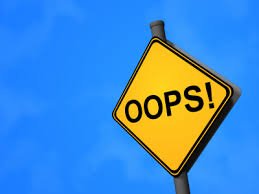 I have harped virtually all through this Blog on making mistakes. A 27-minute video made by the Communications Network showcases Susan Herr, president of PhilanthroMedia talking to Grant Olphant, president of the Pittsburgh Foundation in a conversation called 'What's the Upside of Failure?' It is worth a listen. Grant talks about specific 'mistakes' in his past and why saying "oops" is worthwhile. Susan also mentioned a new article, Philanthropy and Mistakes:An untapped resource by Robert Giloth and Susan Gerwirtz of the Annie E. Casey Foundation. It identified several types of common mistakes:
The article also briefly describes a few case studies about foundation failures, one that discusses the "dangers of outcome measures". Cheers to oops! —Julia 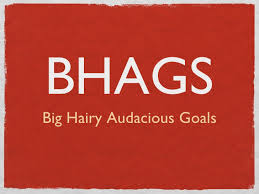 In the arguments about nonprofits operating more like business, I sometimes find my feathers ruffled by the limitations of this seemingly black and white debate. There are differences between not and for-profit entities so not all typical business practice translates successfully into the nonprofit world, but there are business strategies that do help nonprofits be more successful. One of the proponents of nonprofits running like businesses, Dan Pallotta, wrote a piece I agree with on his “Free the Nonprofits” Blog at Harvard Business Publishing. Here he talks about “getting to scale” (another buzz phrase used a lot these days). It is not, as many seem to think, getting a nonprofit to the point of self-sustainability. Instead, Pallotta defines scale as responding to the big problems with responses as large as what they need. “What good is it to have a bunch of nonprofits that are able to sustain themselves, if they are only large enough to address .001% of the problem?”, he asks. A big, hairy audacious goal and organizations large enough to achieve those goals in ten, twenty years, are needed to address big, hairy problems like homelessness, hunger, racism, healthcare, poverty, and education. Getting to scale means changing the nonprofit community significantly, but changemakers are what both funders and nonprofit leaders should be. —Julia |
AuthorJulia Kittross: Archives
September 2017
Categories
All
|

Julia Kittross | Philanthropy Sherpas
[email protected] | www.PhilanthropySherpas.com | 206.334.7995
[email protected] | www.PhilanthropySherpas.com | 206.334.7995
 RSS Feed
RSS Feed